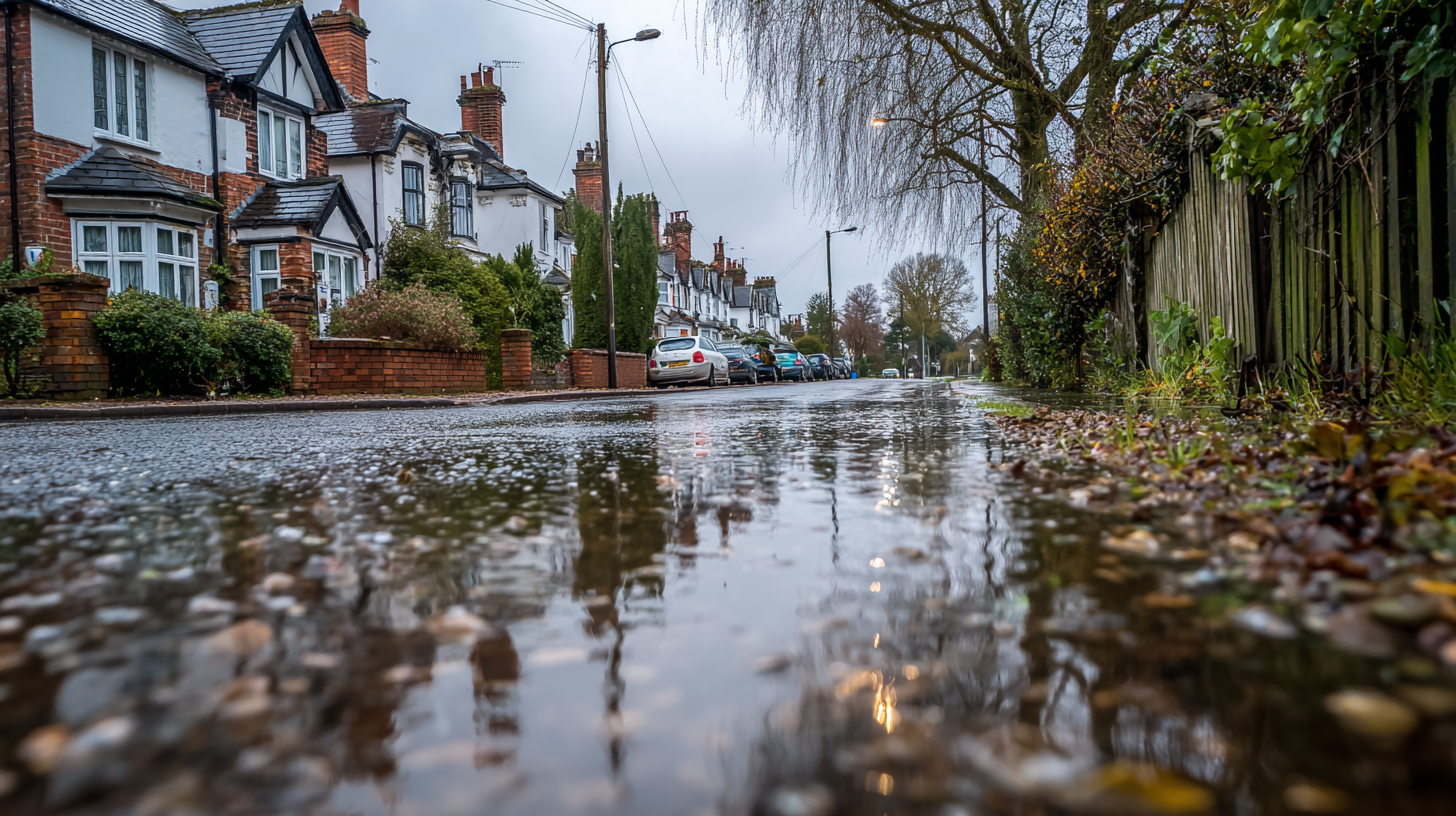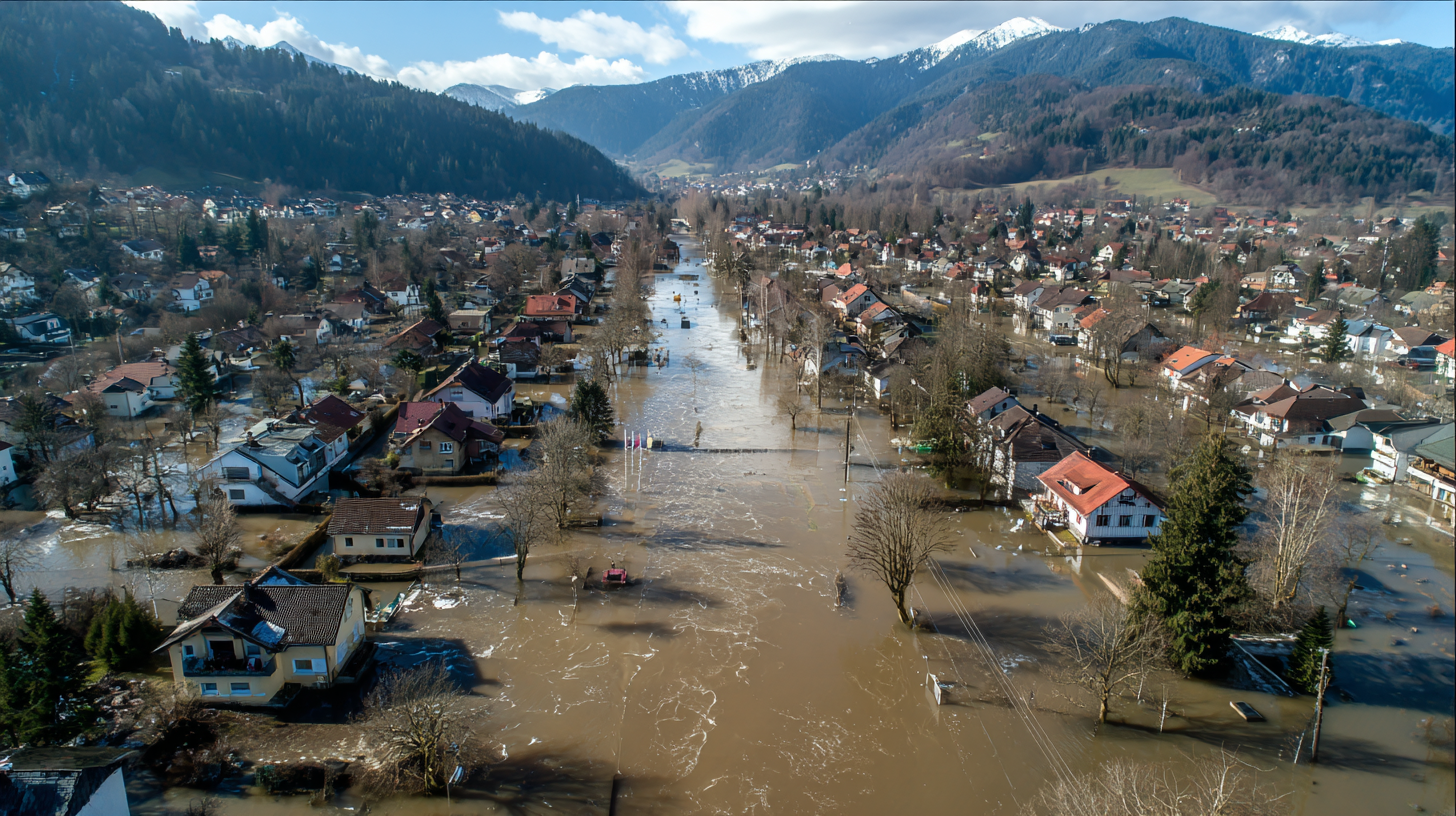In the face of increasingly severe weather patterns and rising sea levels, homeowners are more than ever seeking effective solutions to protect their properties from flooding. According to the Federal Emergency Management Agency (FEMA), flooding is the most common and widespread natural disaster in the United States, leading to damages exceeding $8 billion annually. The rise of boxwall flood barriers has emerged as a critical intervention for homeowners looking to safeguard their residences against such threats.

These innovative barriers are designed to fortify homes against floodwaters, offering a reliable and effective method of protection. By understanding the importance of boxwall flood barriers and their design advantages, homeowners can make informed decisions that enhance their property’s resilience in an era where climate change continues to challenge traditional flood management strategies. Embracing these protective measures is essential for homeowners everywhere who wish to secure their investments against the unpredictable forces of nature.
Flooding has become an increasing concern for homeowners, especially in light of recent natural disasters such as the severe flooding in Wuhan, which affected millions. In such contexts, Boxwall flood barriers emerge as a crucial protective solution. These barriers are designed to be easily deployable barriers that can prevent water from entering homes during flood events. By creating a solid physical barrier, they effectively redirect water away and reduce the risk of property damage and costly repairs.
The function of Boxwall flood barriers is straightforward yet highly effective. They are typically made from robust materials that withstand the pressure of rising water levels, ensuring that they remain intact throughout the flooding. Homeowners can install these barriers quickly, often in a matter of minutes, which is essential during emergency situations when every second counts. With frequent warnings about flooding in various regions, having a reliable flood barrier like Boxwall not only provides peace of mind but also protects lives and properties, contributing to a proactive approach in disaster management for homeowners everywhere.
When selecting effective flood barriers like Boxwall, homeowners should focus on several key features to ensure maximum protection. First and foremost, the material used in the barrier’s construction is crucial. High-quality, durable materials such as reinforced polyethylene or aluminum can withstand severe weather conditions and prolonged exposure to water. This resilience significantly enhances the barrier's longevity and reliability during flood events.
Another important aspect to consider is the barrier's ease of installation and storage. Homeowners benefit from barriers that can be quickly deployed during emergencies, which provides invaluable peace of mind. Features such as lightweight design and collapsibility make it straightforward for homeowners to set up the barriers as needed. Finally, the effectiveness of the sealing mechanism plays a vital role; barriers with superior sealing capabilities help prevent water ingress and minimize damage to the property. By focusing on these features, homeowners can make informed choices that protect their homes from flood risks.

Installing Boxwall flood barriers effectively is crucial for homeowners aiming to protect their properties from flooding. Start by selecting the right size for your home’s entry points – doorways and windows. Measure these openings accurately before purchasing your barriers to ensure a snug fit. Remember, a well-fitted barrier significantly reduces the risk of water intrusion during severe weather events.
Tips: Always check the manufacturer’s guidelines for specific installation instructions. Depending on your barrier type, it may require anchoring to the ground for stability. Additionally, consider applying a weather-resistant seal around the edges to further enhance waterproofing.
When you’re ready to install, clear the area around the entry points to ensure a smooth setup. Secure the Boxwall barriers in place, making sure they are tight and properly aligned. Regularly inspect your installation for any wear or damage, particularly after storms. This preventive measure can extend the life of your barriers and maintain their effectiveness when you need them most.
Maintaining your boxwall flood barriers is crucial for ensuring their effectiveness when faced with rising waters. Regular inspections should be part of your routine, ideally conducted at the beginning and end of each season. Check for any signs of wear and tear, such as cracks or deterioration in the material. Additionally, ensure that the seals and connections are intact, as even small gaps can lead to catastrophic failures during a flood event.

Cleaning your flood barriers is another essential maintenance step. Debris such as dirt, leaves, and mud can accumulate and hinder the barrier’s performance. Use a gentle soap solution and a soft brush to clean the surfaces, ensuring that all contaminants are removed thoroughly. After cleaning, inspect the barriers for any potential damage and address these issues promptly to prevent future problems. By following these maintenance tips, homeowners can enhance the longevity and reliability of their boxwall flood barriers, providing peace of mind in flood-prone areas.
Boxwall flood barriers are becoming increasingly popular among homeowners looking to protect their properties from flooding. A cost-benefit analysis reveals that while the initial investment may seem significant, the potential savings on property damage and loss during flood events can far outweigh these costs. Homeowners should consider the long-term financial perspective of installing Boxwall barriers as a preventive measure, which can offer peace of mind and reduce insurance premiums over time.
Tips for evaluating the investment include calculating the estimated costs of flood damage in your area and comparing them to the cost of installing the barriers. Additionally, homeowners should assess the frequency and severity of floods in their location to understand the likelihood of needing such protection. The long-term durability and effectiveness of Boxwall barriers also play an essential role in determining their overall value.
Consider reaching out to neighbors or joining community discussions to share experiences and insights on flood protection measures. This can help you understand the practical benefits of Boxwall barriers from those who have already made the investment. Participating in local workshops or webinars can also provide valuable information on best practices and maintenance tips for flood barriers, maximizing their usage over time.
| Dimension | Description | Cost ($) | Benefits | Estimated Lifespan (Years) |
|---|---|---|---|---|
| Initial Purchase | Cost for acquiring Boxwall Flood Barrier | 1200 | Immediate protection against flooding | 15 |
| Installation | Cost for professional installation | 300 | Assurance of proper setup and functionality | N/A |
| Maintenance Costs | Annual maintenance to ensure functionality | 150 | Longevity of barrier functionality | N/A |
| Potential Flood Damage | Average cost of flood damage without barrier | 25000 | Cost savings from disaster prevention | N/A |
| Total 5-Year Cost | Sum of purchase, installation, and maintenance costs | 4200 | Prevention of potential loss | N/A |
Please enter the details to download, thank you
Get in Touch With Us
Please enter the details to download, thank you
Please enter the details to download, thank you
Please enter the details to download, thank you
Please enter the details to download, thank you
Please enter the details to download, thank you
Please enter the details to download, thank you
Please enter the details to download, thank you
Please enter the details to download, thank you
Please enter the details to download, thank you
Please enter the details to download, thank you
Please enter the details to download, thank you
Please enter the details to download, thank you
Please enter the details to download, thank you
Please enter the details to download, thank you
Please enter the details to download, thank you
Please enter the details to download, thank you
Please enter the details to download, thank you
Please enter the details to download, thank you
Please enter the details to download, thank you
Please enter the details to download, thank you
Please enter the details to download, thank you
Please enter the details to download, thank you
Please enter the details to download, thank you
Please enter the details to download, thank you
Please enter the details to download, thank you
Please enter the details to download, thank you
Please enter the details to download, thank you
Please enter the details to download, thank you
Please enter the details to download, thank you
Please enter the details to download, thank you
Please enter the details to download, thank you
Please enter the details to download, thank you
Please enter the details to download, thank you
Please enter the details to download, thank you
Please enter the details to download, thank you
Please enter the details to download, thank you
Please enter the details to download, thank you
Please enter the details to download, thank you
Please enter the details to download, thank you
Please enter the details to download, thank you
Please enter the details to download, thank you
Please enter the details to download, thank you
Please enter the details to download, thank you
Please enter the details to download, thank you
Please enter the details to download, thank you
Please enter the details to download, thank you